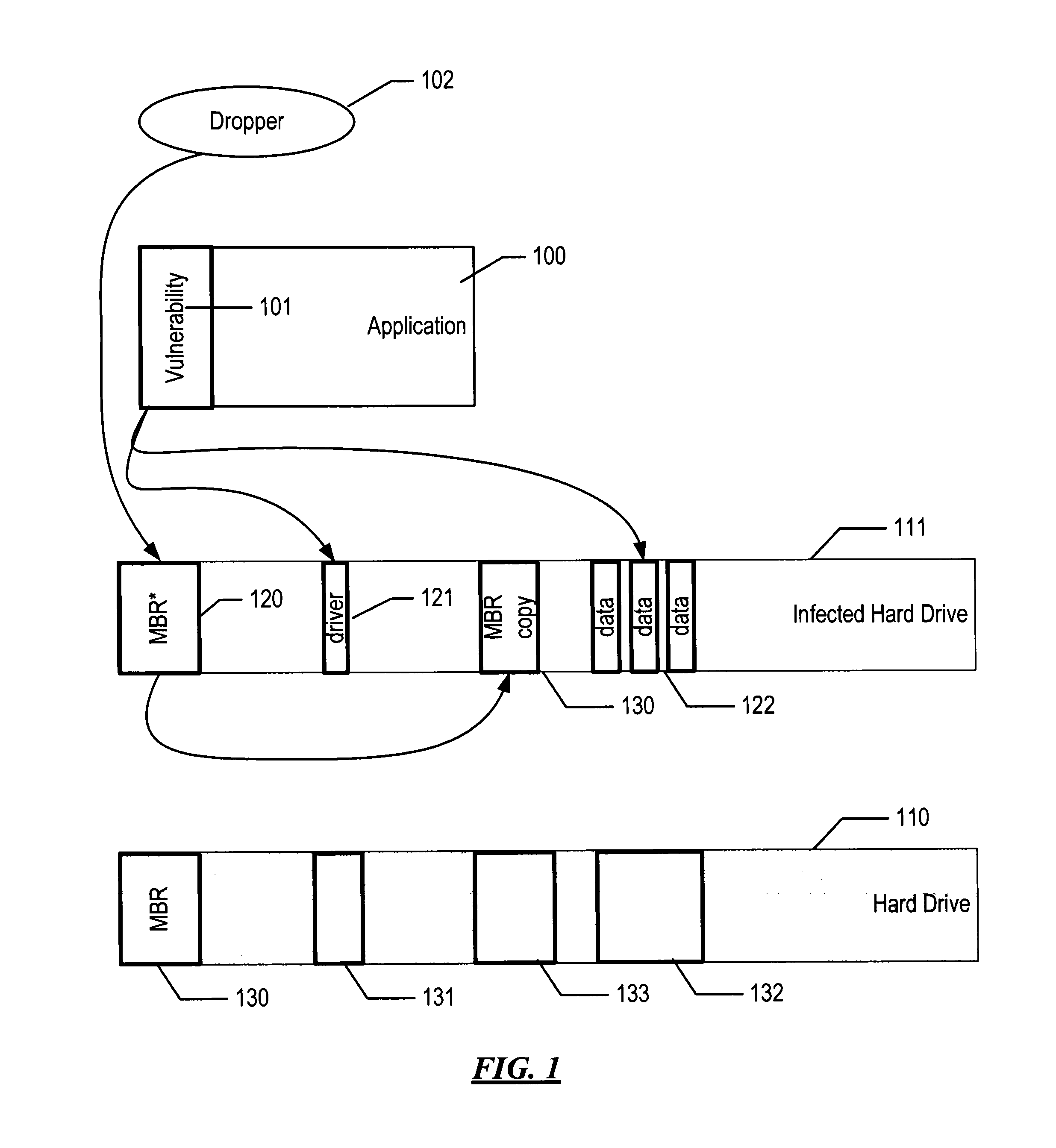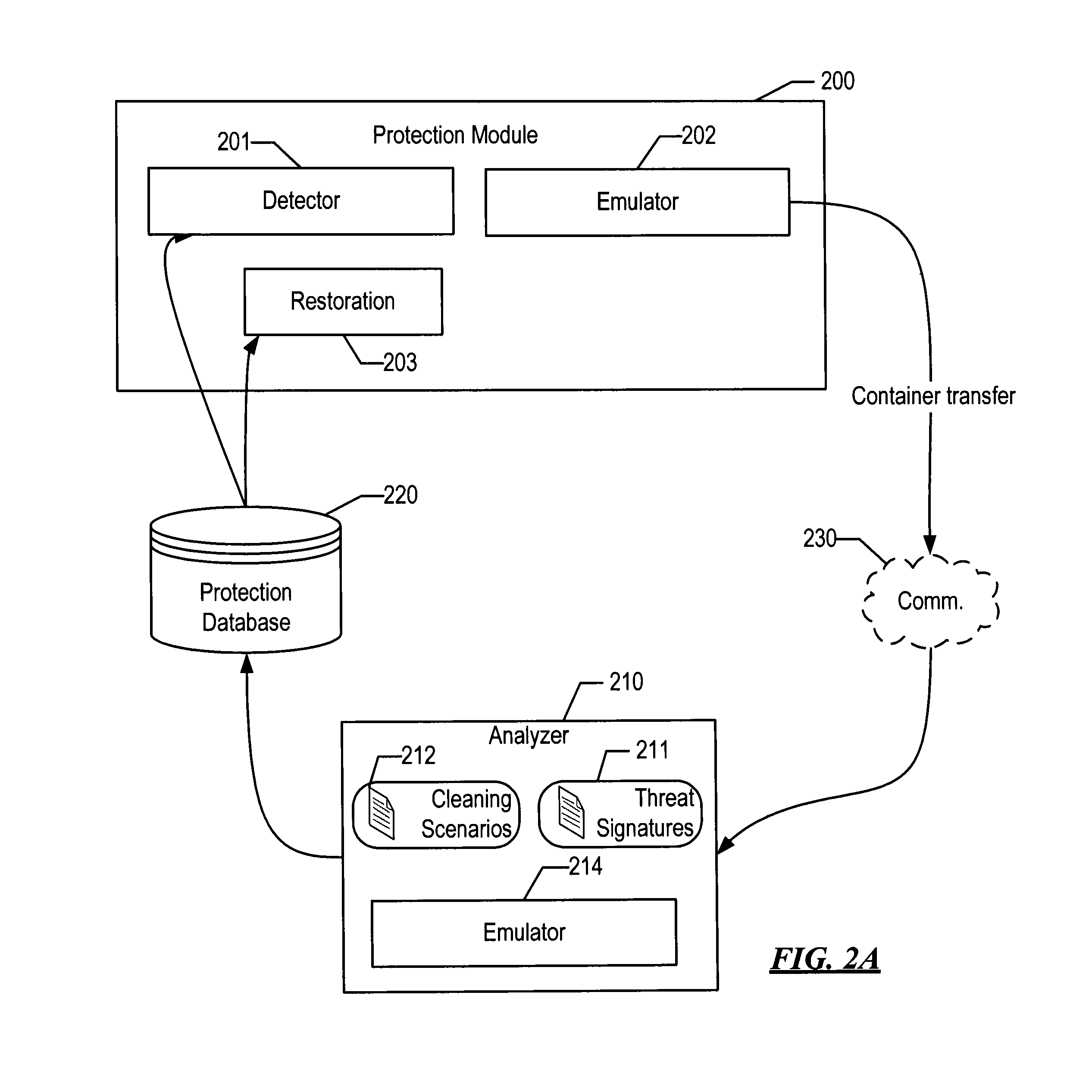System and method for detecting malware targeting the boot process of a computer using boot process emulation
a technology of boot process and malware, applied in the field of information processing and security, can solve the problems of affecting the ability of the computer complicating the computer's ability to detect and remove harmful processes, and affecting the ability to counter threats, so as to reduce the time needed
- Summary
- Abstract
- Description
- Claims
- Application Information
AI Technical Summary
Benefits of technology
Problems solved by technology
Method used
Image
Examples
Embodiment Construction
[0024]The computer boot process is a complex process with several specifics and nuances, which generally can be divided into two stages: the initial boot and the operating system boot. After the computer is switched on, the power supply tests all necessary voltage levels; if all voltage levels correspond to normal ones, the motherboard receives a PowerGood signal. In the initial state, the processor's input receives a RESET signal, which keeps the processor in a reset state. But after the PowerGood signal is received from the power supply, the RESET signal will be removed, and the processor will begin to execute its first instructions. Therefore, after the power test, the processor starts from the following state: the command register CS contains 0xFFFF, the command pointer (IP register) contains 0, the data and stack segment registers contain 0. After RESET is removed, the processor executes the instruction at the 0xFFFF0 address, in real mode, where the ROM BIOS area is located. I...
PUM
 Login to View More
Login to View More Abstract
Description
Claims
Application Information
 Login to View More
Login to View More - R&D
- Intellectual Property
- Life Sciences
- Materials
- Tech Scout
- Unparalleled Data Quality
- Higher Quality Content
- 60% Fewer Hallucinations
Browse by: Latest US Patents, China's latest patents, Technical Efficacy Thesaurus, Application Domain, Technology Topic, Popular Technical Reports.
© 2025 PatSnap. All rights reserved.Legal|Privacy policy|Modern Slavery Act Transparency Statement|Sitemap|About US| Contact US: help@patsnap.com



